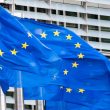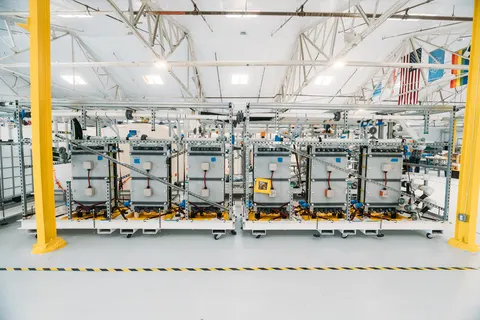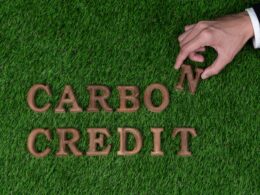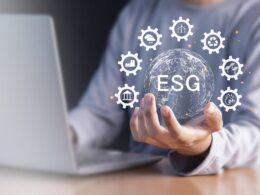Tech giant Microsoft has entered into a ten-year agreement with Ebb Carbon to remove up to 350,000 tons of CO₂ using Ebb Carbon’s Electrochemical Ocean Alkalinity Enhancement (OAE) technology. This method enhances the ocean’s natural ability to capture and permanently store atmospheric CO₂. Initially, Ebb Carbon will deliver 1,333 tons of removals, with Microsoft having the option to purchase up to 350,000 tons in total over the contract term.
Ebb will uses Isometric’s new OAE protocol, a pioneering standard for verifying CO₂ removal via this ocean-based method, ensuring transparency and scientific rigor in carbon credit tracking for Microsoft.
“Microsoft is setting a powerful example with its commitment to becoming carbon negative by 2030 and by using its purchasing power to accelerate the most promising climate solutions. This agreement underscores the potential of Ebb Carbon’s technology to contribute meaningfully to gigaton-scale carbon removal in the years ahead,” said Ben Tarbell, CEO of Ebb Carbon.
Brian Marrs, Senior Director of Energy & Carbon Removal at Microsoft said, “The ocean is a critical part of the carbon cycle. Ebb has developed technology to leverage the natural attributes of the ocean – its massive surface area and natural ocean processes that already pull CO2 from the atmosphere – to durably remove and store large volumes of atmospheric carbon. We are pleased to collaborate with Ebb to both accelerate the scientific foundation for ocean-based carbon dioxide removal and explore the potential of ocean-based carbon removal solutions at scale.”
“It’s great to see Microsoft and Ebb using Isometric’s first of its kind Ocean Alkalinity Enhancement (OAE) protocol to verify carbon removal,” said Stacy Kauk, P.Eng., Chief Science Officer, Isometric.
She added, “OAE is promising because of the vast surface area of the ocean. This same fact requires careful monitoring, reporting and verification (MRV). Isometric’s protocol requires measurements and the use of internationally recognized ocean models to quantify carbon removal so buyers and suppliers can be sure one credit equals one tonne of carbon dioxide removed from the atmosphere. This is another step towards creating trust and transparency in carbon markets.”
The OAE process harnesses a natural geologic process, where alkalinity from rock weathering converts CO₂ in seawater to stable bicarbonate and carbonate ions, securely storing carbon for over 10,000 years. Ebb Carbon’s electrochemical OAE method uses bipolar electrodialysis (BPED) to separate seawater into acidic and alkaline streams, with the latter returned to the ocean to simulate natural alkalization. This not only boosts CO₂ absorption but also mitigates ocean acidification, a climate change effect that harms marine ecosystems. BPED is energy-efficient and cost-effective, widely used in winemaking and wastewater treatment.
With the ocean having absorbed about 30% of anthropogenic CO₂ emissions since the industrial revolution, Ebb Carbon’s approach aims to harness this vast natural sink to store extensive quantities of atmospheric carbon.





















